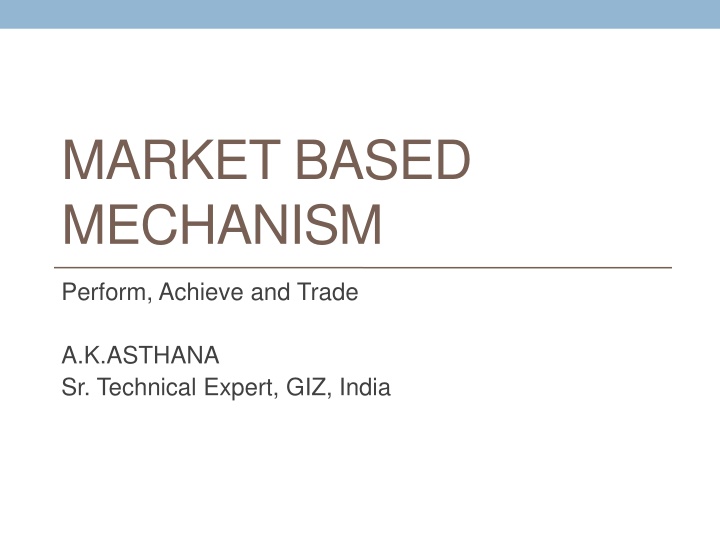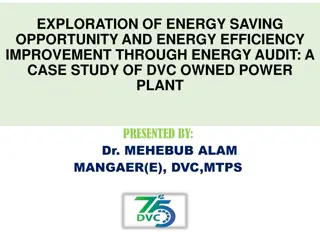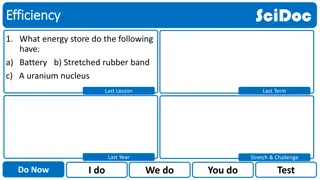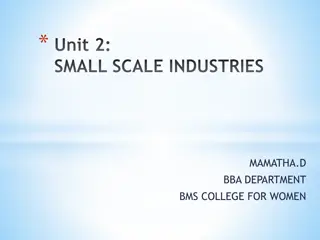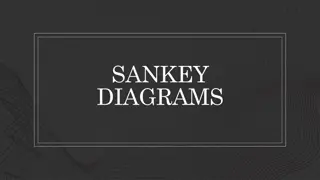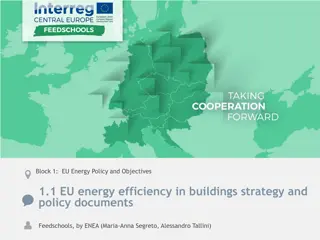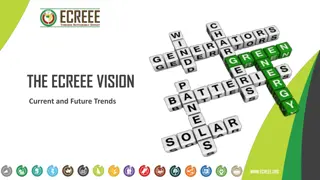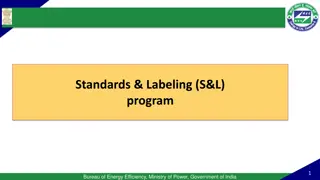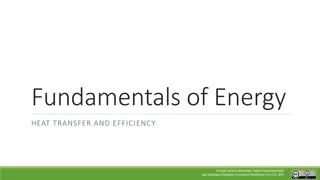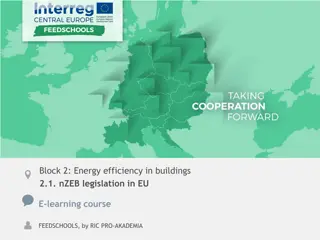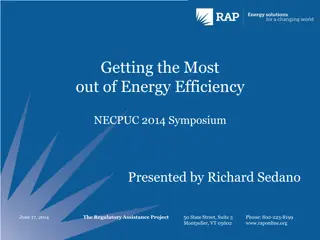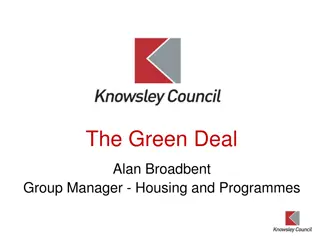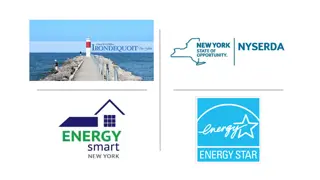Market-Based Mechanisms for Energy Efficiency in Industries
Market-based mechanisms like Perform, Achieve & Trade (PAT) are crucial for enhancing cost-effectiveness in improving energy efficiency in energy-intensive industries. Through certification of energy savings and trading mechanisms, underperformers are penalized while overachievers are rewarded, creating a system that drives significant energy efficiency gains.
Download Presentation

Please find below an Image/Link to download the presentation.
The content on the website is provided AS IS for your information and personal use only. It may not be sold, licensed, or shared on other websites without obtaining consent from the author.If you encounter any issues during the download, it is possible that the publisher has removed the file from their server.
You are allowed to download the files provided on this website for personal or commercial use, subject to the condition that they are used lawfully. All files are the property of their respective owners.
The content on the website is provided AS IS for your information and personal use only. It may not be sold, licensed, or shared on other websites without obtaining consent from the author.
E N D
Presentation Transcript
MARKET BASED MECHANISM Perform, Achieve and Trade A.K.ASTHANA Sr. Technical Expert, GIZ, India
World CO2Emission Savings 45 Gt Share of cumulative abatement between 2010-2035 Current Policies Scenario 42.6 Gt 40 7.1 Gt Efficiency Renewables Biofuels Nuclear CCS 50% 18% 4% 9% 20% New Policies Scenario 35.4 Gt 35 30 13.7 Gt 25 450 Scenario 21.7 Gt 20 Source: WEO 2010 2008 2015 2020 2025 2030 2035 New Policies Scenario is the central scenario in WEO-2010 > assumes cautious implementation of recently announced commitments & plans, even if yet to be formally adopted The 450 Scenario sets out an energy pathway consistent with the goal of limiting increase in average temperature to 2OC
India CO2 Emission Reduction Share of cumulative abatement between 2010-2035 Efficiency Renewables Biofuels Nuclear CCS 51% 32% 1% 8% 8%
Energy Profile - India GHG Emissions Across Sectors Energy Intensity - Industrial Sector 3.3 190 185 3.25 180 175 3.2 170 3.15 165 160 3.1 155 150 3.05 145 3 140 2004-05 2005-06 2006-07 2007-08 2008-09 Energy Intensity of industry sector (mtoe per Billion Rs. GDP) Commercial energy consumption in Industry (in mtoe)
PAT Scheme Goals and action points Accelerating the shift to energy efficient appliances in designated sectors through innovative measures to make the products more affordable. Creation of mechanisms that would help finance demand side management programs in all sectors by capturing future energy savings. Specific Energy Consumption (SEC) reduction targets for the 478 energy-intensive units which are designated consumers under the Energy Conservation Act Developing fiscal instruments to promote energy efficiency
Perform, Achieve & Trade (PAT) Mechanism The market based mechanism to enhance the cost effectiveness in improving the Energy Efficiency in Energy Intensive industries through certification of energy saving which can be traded Penalize under performer Market Based Mechanism Reward over achiever Designated Consumers Administrator Auditing Agencies Market Place Stakeholders Set target and compliance period 8 sectors Thermal Power Plant, Steel, Cement, Fertilizer, Pulp & Paper, Textile, Aluminium, Chlor-alkali Independent Monitor, verify and certify Transaction of energy efficiency instrument Monitoring & verification of targets by Designated Energy Auditors (DENA) Processes Involved Set Targets Trading of ESCerts Setting targets on the basis of current specific energy consumption Set compliance period May take into account Location, Vintage, Technology, raw materials, product mix etc. Check if designated consumer has achieved targets Underachievement: Obligations to buy ESCerts or pay penalty Overachievement: Issuance of ESCerts for banking for later use or trade Participation by Designated consumers on platform provided by Power Exchanges Symmetrical flow of information
Concept of Target, Compliance, Escerts & Penalty Issued Escerts Penalty Baseline SEC Target Achieved SEC Compliance Target SEC Purchase Escerts Scenario 1 Scenario 2
PAT Activity Flow Sheet Target Setting Getting Information Through Base Line Format Data Compilation/ Evaluation [Declaration of Base Year, Target Year ] Baseline & Target Setting (based on last three years) Preparation Performance Assessment Document (PAD) Communication to Designated Consumer Communication to BEE and SDA (Annual submission but the target compliance for three years) Issuance of e-Certs after successful M&V Market for Trade Validation of PAD through DENA & submission of compliance doc. Verification of PAD through DENA
Challenges Technical Scale of Production (Installed Capacities) Use of Raw Material Process Technology Vintage O & M Practices Type of Product Output Variation in output/product Plant boundary Variation in fuel quality Plant load factor Monitoring & Verification
PAT Scheme : Background & Scope Covers 478 designated consumers in 8 sectors All DCs consume about 165 mtoe energy Targets would be given to all DCs to achieve the same within a time frame Achievement > Target E-Scerts Achievement < Target Purchase E-Scerts / Penalty National Target = 6.6 mtoe at the end of 1st PAT Cycle ( by 2014-15)
PAT Scheme : Approach Towards Target Setting Sectoral Target will be on pro-rata basis of energy consumption among 8 sectors to achieve National Target Establishment of Baseline : As per reported data of last 5 years (2005-06 to 2009-10) Normalization Factor (capacity utilization) Arithmetic Average of last 3 years value Targets to be statistically calculated based on relative SEC approach after grouping the DCs suitably The target reviewed by an expert committee before notification
General Rules for Establishing Baseline Definitions: Baseline Year Baseline Production (Pbase) : Avg. of 2007-8, 2008-9 & 2009-10 Baseline SEC (SECbase) : Avg. of 2007-8, 2008-9 & 2009-10 Baseline CU% (CUbase) : Avg. of 2007-8, 2008-9 & 2009-10 Target SEC (SECtarget) : SEC as estimated in 2014-15 Target : % reduction from SECbase : 2009-10 Estimation of Energy Saving (MTOE) : P base ( SEC base SEC target )
Targets For DCs Targets for Designated Consumers Reported Energy Consumption as of now (MTOE) Actual Energy Reduction as of now (MTOE) Earlier Reported Energy Consumption (MTOE) Target Energy consumption as approved by Mop Target Energy consumption as derived from Notification Sheet No. of Identified DCs Sector Aluminium Chlor-Alkali Textile Pulp & Paper Iron & Steel Fertilizer Cement Sub-Total TPPs TOTAL 10 22 90 31 67 29 85 7.71 0.88 1.20 2.09 25.32 8.20 15.01 60.41 104.56 164.97 0.455 0.054 0.069 0.118 1.480 0.478 0.815 3.469 3.100 6.569 7.73 0.84 1.62 2.09 28.00 7.86 11.87 60.01 104.14 164.15 0.464 0.050 0.130 0.146 1.400 0.393 0.950 3.533 3.124 6.657 0.456 0.054 0.066 0.119 1.486 0.478 0.816 3.475 3.211 6.686 334 144 478
Million kcal in Sponge Iron plants 14.00 12.00 10.00 8.00 Million kcal in Sponge Iron plants 6.00 4.00 2.00 0.00 1 2 3 4 5 6 7 8 9 10 11
Electrical SEC in Steel melting shop (kWh/T) 1600.00 1400.00 1200.00 1000.00 800.00 Electrical SEC in Steel melting shop (kWh/T) 600.00 400.00 200.00 0.00 1 2 3 4 5 6 7 8 9 10 11 12 13 14
